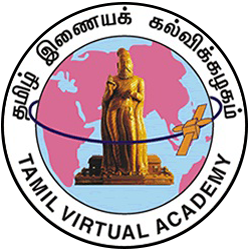Primary tabs
Lesson - 4
A02124: படர்க்கை வினைமுற்றுகள்
This lesson focuses on III person finite verbs. Separate inflectional endings are there in Tamil reflecting the two statuses (திணை) (high and low) and the three genders (பால்) (feminine. masculine, neuter) and the two numbers (எண்) (Singular and Plural).
The first unit deals with III person masculine explicit verbs as well as implicit verbs. In the second unit the same distinction using feminine gender is explained. Plural forms of explicit and implicit finites are illustrated in the third unit.
The next two units deal with neuter gender singular and plural respectively. Thus each unit in this lesson distinguishes explicit from implicit finites using the same inflections. In the plural of neuter gender the suffix ‘ஆ’ indicates negative meaning.
It is easy to understand that ‘அன்’ and ‘ஆன்’ in III person point to masculine gender. Similarly, ‘அள்’ and ‘ஆள்’ indicate feminine gender. The plural in high status (உயர்திணை) uses அர், ஆர், ப and மார் suffixes.
In the case of neuter gender the suffixes are து, று and டு in singular verbs. Plural forms use அ and ஆ.
So, this lesson presents inflections in finite verbs used with the genders and the two numbers (totally five types). More or less the same endings are used in explicit and implicit finites. The ending ‘ஆ’ in III person plural of the status signifies negation.


